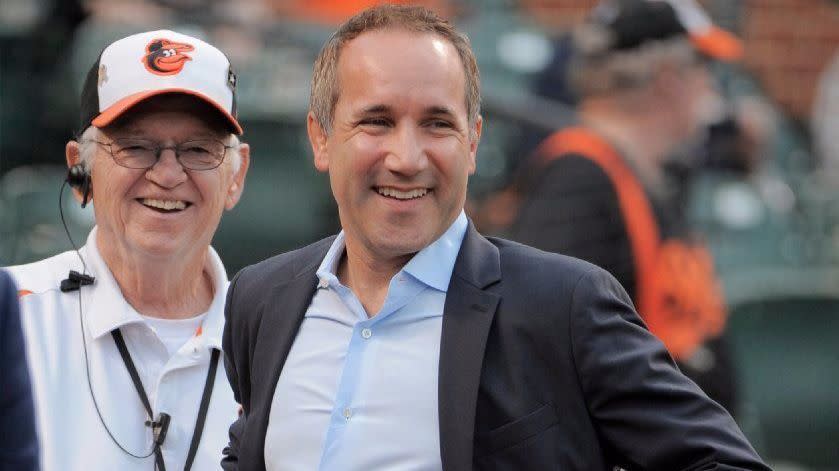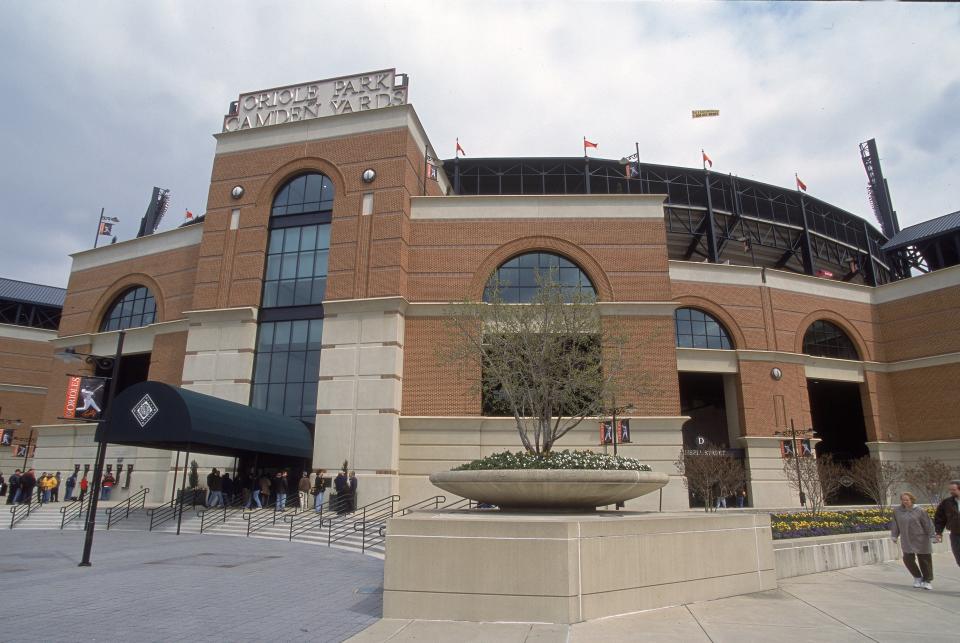Could Baltimore Orioles' $0 tickets be the antidote for baseball's attendance woes?

The grand experiment is barely a week old, so the Baltimore Orioles still aren’t entirely certain of the long-term effect their newest tier of ticket prices will have on the organization. It is one thing to lower the cost of getting into Camden Yards. It is something different altogether to make that price $0.
In March, the Orioles announced that this season they would launch Kids Cheer Free, a program in which an adult who purchases an upper-deck ticket can receive two more gratis for that game, so long as the accompanying fans are 9 years old or younger. It was a novel idea for any number of reasons; it was particularly interesting in the context of Major League Baseball’s annual-revenue boom amid a decade of flagging attendance, which has dipped from a record 79.5 million in 2007 to less than 73 million last year.
[NBA Playoffs Bracket Challenge: $1M for the perfect bracket]
“When a sport says every year we’re now at $8 billion, $9 billion, $10 billion … how did the league or the industry get there?” Orioles executive vice president John P. Angelos said. “I’ll tell you how [baseball] didn’t get there: by raising the number of people walking in through the door.”
The Orioles recognize this firsthand, their attendance barely breaking the two million-fan threshold last year and threatening to retreat even further this year. Letting kids in for free, however, isn’t simply a play for immediate gratitude. It is Angelos’ effort to breed a new generation of Orioles fans who choose Baltimore over the team 40 miles to the southwest in Washington.
And so kids cheer free every night for the rest of the summer, and hot dogs are $1.50, and 12-ounce beers cost $4, and fans can bring in pretty much whatever food they’d like from the outside, and all of those perks set across the backdrop of Camden Yards, a quarter-century later still the prettiest of all parks, coalesce into a compelling argument to visit, perhaps regularly.
“We don’t want to tell people we’re pricing you out before you walk in the door,” Angelos said. “Or once you’re inside the door we’re gonna price you out yet again. The last thing you want is for your customer to feel as though you’re treating [him or her] like a captive audience. It’s not an airport. We have to have the anti-airport experience.”
Angelos’ tack doesn’t exactly dovetail with fellow owners’. Rather than preach affordability, more and more teams spend their energy on making a game an event, an experience, a ’grammable, tweet-worthy, snaptastic use of three (or four) hours. Live-entertainment providers fight for every last dollar. Teams believe they can seduce you into spending yours on absurd foods – say, a hot dog wrapped in bacon and deep fried in funnel cake batter, which doesn’t exist but absolutely should – or in stores overflowing with swag.

To say the 50-year-old Angelos, the son of Orioles owner Peter Angelos and a club executive for nearly two decades now, doesn’t care about profit would be incorrect. It’s that he’s not myopic about it, and after the five million-plus-fan attendance dip in 2009 that followed the financial crisis, he believed it was essential for teams to let the tail wag the dog a bit and listen to fans’ desires.
“If you want to be in touch with the consumer, the fan that pays the bills, it’s always price and value received,” Angelos said. “It’s really not a debate. If the audience thinks they’re getting a good price value, then they are. If they don’t, they’re not. You can’t spin that. You can’t press-release your way out of that. You can’t argue with people and tell them, ‘No, it’s really worth it.’ They either think it is or not.
“You can’t ignore the pie for the average person – no, the plurality of people – has had huge chunks taken out of it by the incredible escalation in healthcare and education. You have to want to know how people feel about these things. I think I know, based on general understanding of the cost of living and the increasing pressures on most every socioeconomic level.”
Angelos might be the most woke owner in the game: socially conscious enough to write in defense of peaceful protest; unafraid to oppose President Trump decrying athlete protests; passionate about the ills of racism and inequality; and acutely aware of the plight of the middle class. He sees professional sports franchises as public-private partnerships, and that it’s his family’s duty to serve the greater Baltimore area as it has him.
So that meant looking at something as granular as how to incentivize parents to bring their children to Camden Yards. Fewer kids go to games than MLB would like because parents are hesitant to shell out money for expensive tickets and concessions for children too young to appreciate the game. What, then, is the price at which parents would consider bringing their kids? Well, free sounds pretty good.
“You have to assume the parents are rational actors,” Angelos said. “Which means we’re doing something wrong if that’s the bottom line. We’re trying to change the bottom line by saying we’re going to make it easier to bring your 9-and-under kids. It’s an investment in letting people know we want you to come. We’re going to put our money where our invitation is.”
It’s not going to bring back the days of 45,000-person crowds at Camden – not yet at least. This is a long-term play in a sport that has struggled to cultivate a younger base as the average age of its fan runs inverse with its attendance – up and up, to its current 57 years old.
It’s what made the crowd in Chicago of less than 1,000 recently so disconcerting. It wasn’t just the nasty weather that day. The White Sox barely broke 1.6 million total fans at home last year. The Marlins last year featured about 1,500 people at one game. Which makes the likely failure of their goal of to draw more fans than in 2017 all the more troublesome.
What Angelos hopes to glean from Kids Cheer Free, in addition to brand loyalty, is a new set of data. Will a baseball team with across-the-board reasonable concession items be able to do what the Atlanta Falcons did, according to ESPN, and make even more money than they did before slashing prices? Will families take advantage of the program and bring in kids older than 9? Does something like this engender even more loyalty to the team than the latest Cal Ripken Jr. bobblehead?
“It’s really a long-term-investment program,” Angelos said. “It’s a winner all the way around. If nothing else, you won’t walk into Camden Yards today, or five or 10 years from now, and say kids are priced out of the ballpark.”
A new generation of kids who love baseball isn’t going to form all by itself. The Orioles, the Diamondbacks, the Rockies – they’re at the forefront, along with a few others, reaching out to families, cutting prices, insistent the game won’t just to get back to the 79.5 million-fan threshold but exceed it. The responsibility is clear, the risk palpable, and yet John Angelos doesn’t feel that at all. No, it’s something more acute, something liberating, something that the tickets and concessions and everything else germinate in him. It’s almost like he’s … free.
More from Yahoo Sports:
• How tall was André the Giant? We may never know
• Marlins are on an island in bizarre legal fight
• Controversial NFL star says he’s retiring due to ‘stress’
• New federal charges in college basketball scandal

